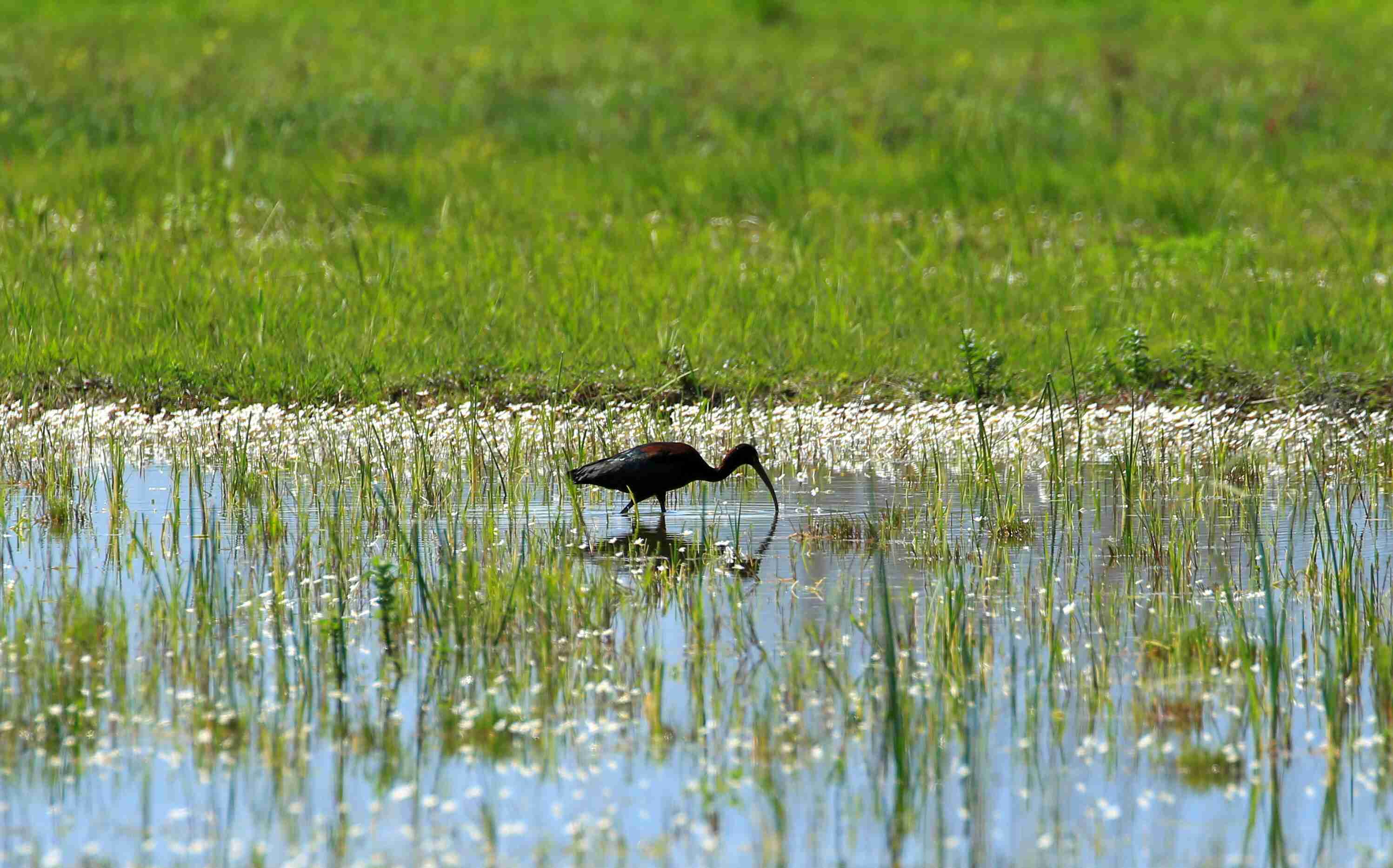
Wetlands are fascinating and ecologically significant ecosystems that play a vital role in maintaining the Earth’s biodiversity. These areas, characterized by their unique blend of land and water, are home to a diverse array of plant and animal species, making them a sanctuary for wildlife enthusiasts and nature lovers alike.
In this article, we will explore 20 astounding facts about wetlands, uncovering their importance, their role in the environment, and the awe-inspiring wonders they hold. From their vital ecosystem services to their incredible adaptability, wetlands prove to be more than just marshy lands – they are an integral part of our planet’s delicate balance.
So, prepare to be amazed as we dive into the intriguing world of wetlands and discover the hidden treasures that lie within.
Key Takeaways:
- Wetlands are vital for wildlife, water purification, and flood control. They’re like nature’s superheroes, protecting the environment and supporting diverse ecosystems.
- We need to protect wetlands from pollution and destruction to ensure a sustainable future for all. Let’s work together to preserve these incredible natural wonders.
Wetlands are among the most productive ecosystems on Earth.
Wetlands support a rich array of plant and animal life, contributing to their high productivity. They are often referred to as the “biological supermarkets” of our planet.
Wetlands act as natural filters.
Wetlands help purify water by trapping sediments, nutrients, and pollutants. They play a critical role in maintaining water quality and reducing the risk of waterborne diseases.
Wetlands provide essential habitat for wildlife.
Many species of birds, mammals, reptiles, and amphibians rely on wetlands for breeding, feeding, and shelter. They support incredible biodiversity, including endangered and migratory species.
Wetlands act as a buffer against natural disasters.
Wetlands help mitigate the impacts of floods and storms by absorbing and storing excess water. They act as a natural sponge and provide flood control to surrounding areas.
Wetlands are important carbon sinks.
They store vast amounts of carbon dioxide, helping to mitigate climate change by reducing greenhouse gas emissions in the atmosphere.
Wetlands are home to unique and specialized plant species.
They support plants such as cattails, water lilies, and mangroves that are adapted to grow in waterlogged conditions.
Wetlands support numerous economically important activities.
They provide resources for fishing, agriculture, tourism, and recreation, contributing to local economies and livelihoods.
Wetlands play a crucial role in water cycle regulation.
They help maintain water flow and prevent droughts by replenishing groundwater and regulating streamflow.
Wetlands are home to a wide range of migratory birds.
Millions of birds use wetlands as stopover sites during their long-distance migration journeys, making wetlands vital for their survival.
Wetlands are incredibly diverse ecosystems.
They can be found in various forms, such as marshes, swamps, bogs, and estuaries, each hosting a unique set of species and ecological functions.
Wetlands help control erosion.
The vegetation in wetlands stabilizes soil, prevents erosion, and protects coastlines from erosion caused by waves and tidal forces.
Wetlands improve water supply.
They act as natural reservoirs, retaining water during periods of excess and slowly releasing it during dry spells, ensuring a steady water supply.
Wetlands provide breeding grounds for fish.
They serve as nurseries for various fish species, supporting fish populations and ensuring healthy aquatic ecosystems.
Wetlands have cultural and historical significance.
Many indigenous cultures have deep connections to wetlands, considering them sacred and integral to their way of life.
Wetland loss is a major environmental concern.
Due to human activities, wetlands are being drained and filled at an alarming rate, threatening their biodiversity and the services they provide.
Wetlands are great recreational spaces.
They offer opportunities for activities such as bird watching, boating, fishing, and nature photography, allowing people to connect with nature.
Wetlands support a wide range of ecosystem services.
These include water purification, flood control, carbon sequestration, climate regulation, and habitat provision.
Wetlands are recognized globally for their importance.
The Ramsar Convention, an international treaty, aims to conserve and sustainably use wetlands and their resources.
Wetlands are under threat from pollution.
Industrial pollution, agricultural runoff, and improper waste disposal pose significant risks to the health and integrity of wetland ecosystems.
Wetlands are worth protecting for future generations.
Preserving and restoring wetlands is crucial for maintaining biodiversity, mitigating climate change, and ensuring a sustainable future for all.
These 20 astounding facts about wetlands highlight their importance and the need for their conservation. Let’s work together to protect these remarkable ecosystems and continue to marvel at their wonders for generations to come.
Conclusion
Wetlands are truly remarkable ecosystems that provide numerous benefits to both nature and humanity. From their incredible biodiversity to their water purification capabilities, wetlands play a vital role in maintaining the health of our planet.
Whether you are an avid nature lover or simply curious about the world around us, exploring the wonders of wetlands can be an eye-opening experience. The astonishing facts about wetlands, from their unique adaptability to their important role in mitigating climate change, remind us of the delicate balance of our natural environment.
So, next time you have the opportunity, take a moment to appreciate the beauty and significance of wetlands. They are truly awe-inspiring habitats that deserve our protection and admiration.
FAQs
1. What is a wetland?
A wetland is a transitional area between land and water, characterized by the presence of waterlogged conditions for a significant part of the year. It is home to various aquatic plants, animals, and microbes.
2. What are the types of wetlands?
There are several types of wetlands, including marshes, swamps, bogs, and fens. Marshes are characterized by soft-stemmed vegetation, while swamps are dominated by trees and shrubs. Bogs are acidic and have a thick layer of sphagnum moss, while fens have a more alkaline pH and are nutrient-rich.
3. What are the benefits of wetlands?
Wetlands provide numerous benefits, such as water purification, flood control, erosion prevention, and carbon sequestration. They also serve as habitats for a wide range of plants and animals and are important breeding grounds for many species.
4. Why are wetlands important for biodiversity?
Wetlands are highly productive ecosystems that support a diverse array of species. They provide food, shelter, and nesting grounds for many plants and animals, including migratory birds, amphibians, fish, and insects.
5. How do wetlands help in mitigating climate change?
Wetlands play a crucial role in mitigating climate change by acting as carbon sinks. They absorb and store carbon dioxide from the atmosphere, helping to reduce greenhouse gas emissions. Additionally, wetlands can help in preventing coastal erosion and storm damage by acting as natural buffers.
6. Are wetlands protected?
Many countries have recognized the importance of wetlands and have established protected areas to preserve these valuable ecosystems. Organizations like Ramsar Convention work towards the conservation and wise use of wetlands on a global scale.
7. Can wetlands be restored?
Yes, wetlands can be restored through various conservation efforts such as removing invasive species, restoring water flow, and reducing pollution. Wetland restoration projects aim to bring back the natural functioning and biodiversity of degraded wetlands.
8. Are wetlands found all over the world?
Yes, wetlands are found in almost every country across the globe, ranging from coastal areas to inland regions. They are incredibly diverse and can adapt to different climatic and geographical conditions.
9. Can I visit and explore wetlands?
Yes, many wetlands have designated areas for visitors to explore and appreciate their beauty and ecological importance. Just make sure to follow any guidelines or regulations in place to protect the delicate balance of these ecosystems.
10. How can I contribute to wetland conservation?
You can contribute to wetland conservation by supporting local and global conservation organizations, participating in wetland restoration projects, and spreading awareness about the importance of wetlands within your community.
Wetlands are truly remarkable ecosystems that deserve our attention and protection. If you found these facts about wetlands astounding, you'll be amazed by the surprising truths behind wetland conservation efforts. Delve into the fascinating world of wetlands and explore the unbelievable realities of these complex ecosystems. By understanding the importance and unique characteristics of wetlands, we can better appreciate and advocate for their preservation.
Was this page helpful?
Our commitment to delivering trustworthy and engaging content is at the heart of what we do. Each fact on our site is contributed by real users like you, bringing a wealth of diverse insights and information. To ensure the highest standards of accuracy and reliability, our dedicated editors meticulously review each submission. This process guarantees that the facts we share are not only fascinating but also credible. Trust in our commitment to quality and authenticity as you explore and learn with us.


